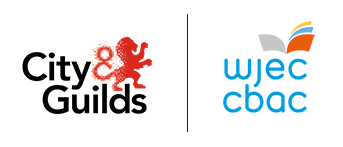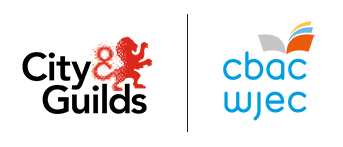




Within health or social care multidisciplinary teams often work together. A multidisciplinary team is a group of health or social care workers and professionals who provide a specific service to individuals accessing services. An important part of multidisciplinary team work often involves multi-agency working. Multi-agency working is about different services, agencies and teams of professionals working together to provide the services that fully meet the needs of individuals using the service.
The purpose and function of teams may differ hugely between them. But teamwork is always about striving to accomplish a set of common goals and objectives; their purpose. This could be, for example, how to implement new ways of working, or to develop a new aspect of service delivery to meet the needs of individuals.
Ym maes iechyd a gofal cymdeithasol, mae timau amlddisgyblaeth yn aml yn cydweithio. Mae tîm amlddisgyblaeth yn cynnwys grŵp o weithwyr iechyd neu ofal cymdeithasol a gweithwyr proffesiynol sy'n darparu gwasanaeth penodol i unigolion sy'n defnyddio gwasanaethau. Mae rhan bwysig o waith tîm amlddisgyblaethol yn aml yn cynnwys trefniadau gweithio amlasiantaethol. Fel rhan o drefniadau gweithio amlasiantaethol, bydd gwahanol wasanaethau, asiantaethau a thimau o weithwyr proffesiynol yn cydweithio er mwyn darparu'r gwasanaethau sy'n diwallu anghenion yr unigolion sy'n defnyddio'r gwasanaeth yn llawn.
Gall diben a swyddogaeth timau amrywio'n sylweddol. Ond mae gwaith tîm bob amser yn ymwneud ag anelu at gyflawni cyfres o nodau ac amcanion cyffredin; eu diben. Er enghraifft, sut i roi ffyrdd newydd o weithio ar waith, neu sut i ddatblygu agwedd newydd ar y gwasanaethau a ddarperir er mwyn diwallu anghenion unigolion.

There can be many reasons for teams, and they can vary in their structure. For example, a team could be linear with a direct relationship between someone in a higher position and someone in a lower position.
Other structures include a lateral approach where working relationships exist between different departments on the same managerial or working level. Functional structures are where the relationship exists between specialist positions and other areas. The specialist will often have the authority to see that a line manager puts in place any of their instructions. In larger organisations such as the National Health Service (NHS) structures can be large and complex and are often divided into smaller teams or structures for each individual department within the organisation.
Gall fod sawl rheswm dros sefydlu timau, a gall eu strwythur amrywio. Er enghraifft, gallai tîm fod ar ffurf linol â chydberthynas uniongyrchol rhwng rhywun mewn swydd uwch a rhywun mewn swydd is.
Mae strwythurau eraill yn cynnwys dull gweithredu ochrog lle ceir cydberthnasau gwaith rhwng gwahanol adrannau ar yr un lefel reoli neu lefel waith. Ystyr strwythurau gweithredol yw lle ceir cydberthynas rhwng swyddi arbenigol a meysydd eraill. Yn aml, bydd yr arbenigwr yn meddu ar yr awdurdod i sicrhau bod rheolwr llinell yn gweithredu'n unol ag unrhyw gyfarwyddiadau a roddir ganddo. Mewn sefydliadau mwy, fel y Gwasanaeth Iechyd Gwladol (GIG), gall strwythurau fod yn fawr ac yn gymhleth ac fe'u rhennir yn aml yn dimau neu'n strwythurau llai er gyfer pob adran unigol sy'n rhan o'r sefydliad.

Positive and effective communication can help to keep team members motivated and working at their best. Communication is the biggest influence on an organisation. Good listening is integral to good communication. Empathy is necessary for teamwork to be effective, it is important to be open to the opinion of others and to understand their position on any issue raised. Having patience is important because if we rush what we say, others may find it difficult to understand what is being communicated. It is also important to try to view problems and difficulties as challenges, and look at ways of overcoming them, rather than letting them become a major, on-going burden.
Gall cyfathrebu cadarnhaol ac effeithiol helpu i gymell aelodau'r tîm a sicrhau eu bod yn gweithio hyd eithaf eu gallu. Cyfathrebu yw'r dylanwad mwyaf ar sefydliad. Mae gwrando'n dda yn hanfodol er mwyn cyfathrebu'n dda. Mae angen empathi er mwyn i waith tîm fod yn effeithiol, mae'n bwysig bod yn barod i dderbyn barn eraill ac i ddeall eu safbwynt ar unrhyw fater a godir. Mae amynedd yn bwysig, oherwydd os byddwn yn rhuthro'r hyn a ddywedwn, gall eraill ei chael hi'n anodd i ddeall yr hyn a gaiff ei gyfathrebu. Mae hefyd yn bwysig ceisio ystyried problemau ac anawsterau fel heriau, ac i ystyried ffyrdd o'u goresgyn, yn hytrach na gadael iddynt ddod yn faich fawr a pharhaus.

Team working draws on areas of knowledge and competence from each member, enabling the needs of individuals accessing services to be met. Team members have two very clear roles. They have to achieve the goals and objectives of the team, and they have to maintain effective working relationships with each other. These two aspects are interlinked because if the objectives are not met, this will put pressure on the day to day working relationships within the team and on the well-being of individuals accessing the service. Good, collaborative team working supports the achievement of workplace objectives, supporting quality care delivery.
Mae gwaith tîm yn defnyddio meysydd gwybodaeth a chymhwysedd pob aelod, sy'n golygu y gellir diwallu anghenion yr unigolion sy'n defnyddio'r gwasanaethau. Mae gan aelodau timau ddwy rôl glir iawn. Mae'n rhaid iddynt gyflawni nodau ac amcanion y tîm, ac mae'n rhaid iddynt gynnal cydberthnasau gwaith effeithiol gyda'i gilydd. Mae cysylltiad rhwng y ddwy agwedd hyn oherwydd os na chaiff yr amcanion eu cyflawni, bydd pwysau ar y cydberthnasau gwaith o ddydd i ddydd yn y tîm ac ar lesiant yr unigolion sy'n defnyddio'r gwasanaeth. Mae gwaith tîm cydweithredol, da yn helpu i gyflawni amcanion y gweithle, gan sicrhau y gellir darparu gofal o ansawdd.